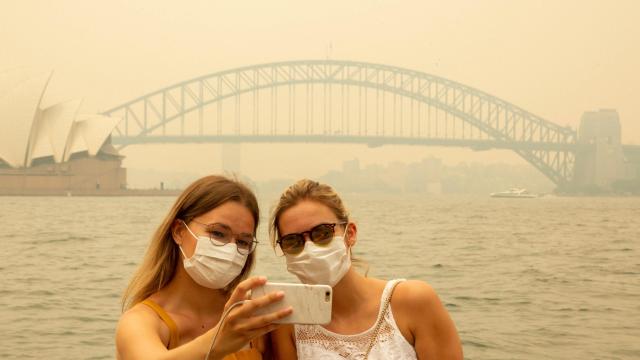We are living through a time unprecedented in human history. The world is at once more connected than ever and also falling apart in ways almost beyond comprehension.
Living at the nexus of these two existential challenges is often disorienting. Scroll through your Twitter feed and you can see images that feel like a Michael Bay movie: the ocean on fire, a boat full of evacuees swerving away from a wall of flames, foundations of houses where a community once stood. The difference is they are video and photos of real-life, transmitted from the frontlines of the climate crisis by the very people suffering the impacts, into the palm of your hand while you wait for your latte or kill time between classes.
This summer has, unfortunately, yielded no shortage of viral images as floods, heat, and fires hit seemingly every corner of the planet. In doing so, it has also revealed a paradox of the climate-connected era we live in: The horrors of the climate crisis are becoming routine, background noise to the daily grind of life. Something that is happening somewhere else — until it is happening to you.
The climate crisis has its own version of Moore’s Law, where disasters continue to grow in scale, scope, and intensity. Because the climate system operates on a lag, it also means that the impacts we’re seeing today are, in part, from fossil fuels sold and burned decades ago. As the global average temperature of the entire planet rises, the risk of acute heat increases. In places such as the American West, Australia, the Mediterranean, and elsewhere, this ups the odds of explosive fires. Elsewhere, it increases the intensity of droughts and the likelihood of heavy downpours. As the most recent Intergovernmental Panel on Climate Change report noted, “Climate change is already affecting every inhabited region across the globe.” Where supercharged weather intersects with society, disaster follows.
Meanwhile, almost every phone is now a camera, and in some cases, a camera good enough to shoot near-professional quality photos and videos. Pew Research data shows that 85% of American adults own a smartphone, and there are billions more in use around the world. Meanwhile, there are 1.9 billion daily Facebook users, nearly 200 million daily Twitter users, and TikTok just overtook Facebook as the most downloaded app on Earth. That does not even get to Instagram, WhatsApp, and other apps that help users disseminate photos or turn their phones into broadcast studios with a few taps. When disaster hits, it is inevitably documented and posted.
Kinda weird that we’re all gonna experience climate change as a series of short, apocalyptic videos until eventually it’s your phone that’s recording
— the shocks factor (@shocks) August 7, 2021
There is an upside to this (at least as much as there can be an upside to outrunning a wildfire) in that the reality of the climate crisis is inescapable. Smooth-brained climate denialists can try to foment doubt and point to dusty old newspapers clippings, but their arguments have become increasingly farcical in the face of overwhelming, ubiquitous catastrophe.
The democratisation of documentation also means that communities no longer have to wait for Jim Cantore to show up to get attention. Floods in Ethiopia or Bangladesh would normally be news in the respective countries or regions and nowhere else; now, they are broadcast to the world. Social media is imperfect as a means of getting tangible relief for those affected, but it is a step beyond neglect.
The increasing drumbeat of disaster on main also poses a risk to how we understand and act on the climate crisis. A 2019 study, which looked at social media posts about extreme weather, found that people posted about the weather more on freakishly hot days or abnormally cold days. But the findings show that after five years of abnormally hot weather, people stopped tweeting about the heat. It just became a part of daily life.
Consuming fiery video after fiery video could have a similar impact. Compartmentalising crisis is part of how we cope as humans. In a piece for the Outline that has stuck with me for years, author Hayes Brown put it this way:
“Still, it’s amazing how much the human mind can compartmentalise when faced with something as vast as extinction. The headlines and news alerts and marches and panels get filed in the mental Pocket folder marked ‘for later’ that you have absolutely [no] intention of ever going back to but gives you the satisfaction of having been interested in the article in the first place. We do our best to go about our days, filling them with a constant stream of distractions.”
In that light, our connected world risks disconnecting from the risks climate change poses. It risks baking in a sense of doom where the actions we need to take seem futile. Or where we forget we even need to take them because climate change just “is what it is,” another distraction sandwiched between shitposts and ads for 300 thread count cotton sheets.
The increasing familiarity of disaster is no excuse for complacency or rubbernecking, though. Instead, it’s a reminder that no place is safe as long as the economy keeps running on fossil fuels.
